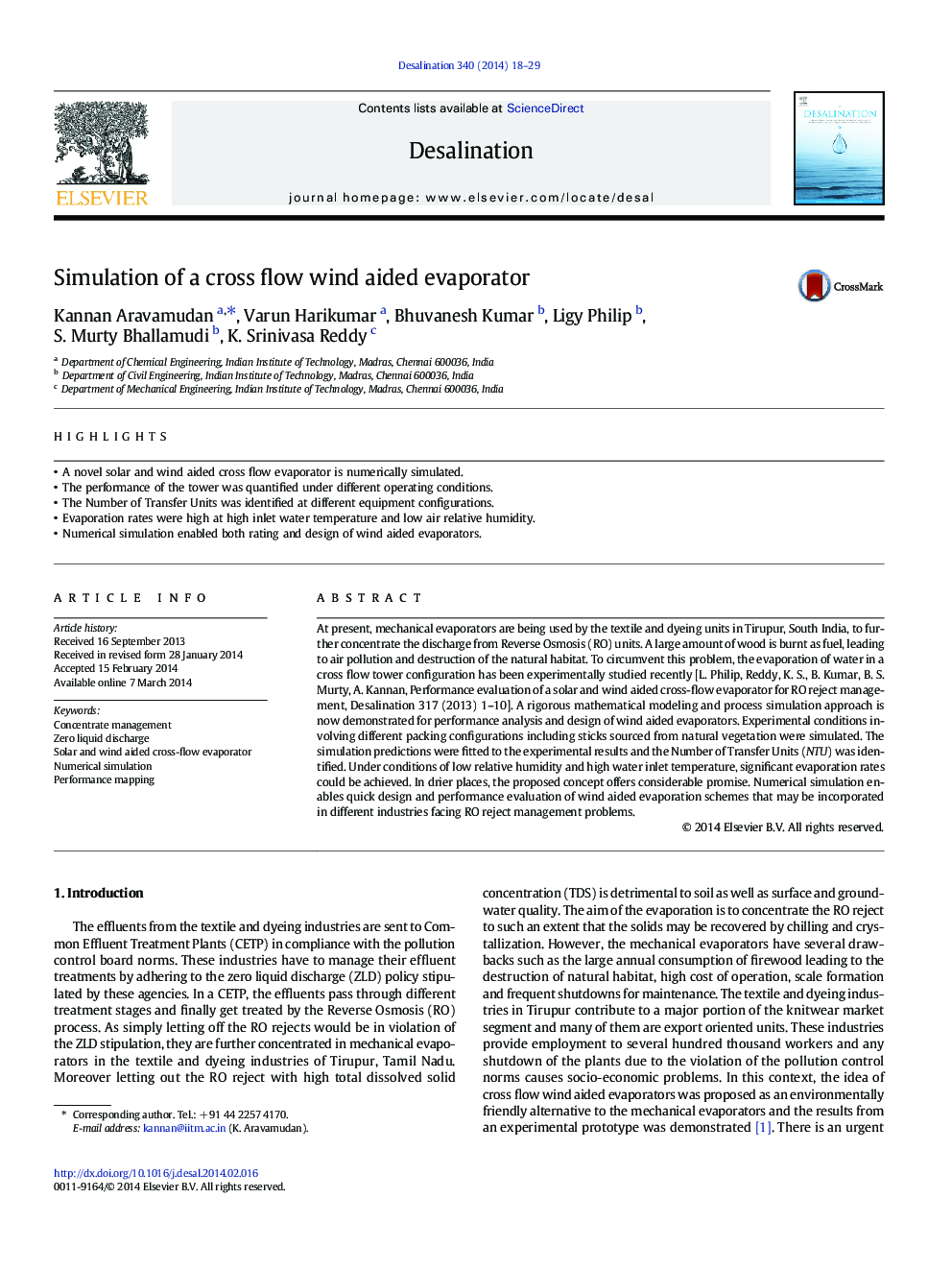| کد مقاله | کد نشریه | سال انتشار | مقاله انگلیسی | نسخه تمام متن |
|---|---|---|---|---|
| 623495 | 1455355 | 2014 | 12 صفحه PDF | دانلود رایگان |
• A novel solar and wind aided cross flow evaporator is numerically simulated.
• The performance of the tower was quantified under different operating conditions.
• The Number of Transfer Units was identified at different equipment configurations.
• Evaporation rates were high at high inlet water temperature and low air relative humidity.
• Numerical simulation enabled both rating and design of wind aided evaporators.
At present, mechanical evaporators are being used by the textile and dyeing units in Tirupur, South India, to further concentrate the discharge from Reverse Osmosis (RO) units. A large amount of wood is burnt as fuel, leading to air pollution and destruction of the natural habitat. To circumvent this problem, the evaporation of water in a cross flow tower configuration has been experimentally studied recently [L. Philip, Reddy, K. S., B. Kumar, B. S. Murty, A. Kannan, Performance evaluation of a solar and wind aided cross-flow evaporator for RO reject management, Desalination 317 (2013) 1–10]. A rigorous mathematical modeling and process simulation approach is now demonstrated for performance analysis and design of wind aided evaporators. Experimental conditions involving different packing configurations including sticks sourced from natural vegetation were simulated. The simulation predictions were fitted to the experimental results and the Number of Transfer Units (NTU) was identified. Under conditions of low relative humidity and high water inlet temperature, significant evaporation rates could be achieved. In drier places, the proposed concept offers considerable promise. Numerical simulation enables quick design and performance evaluation of wind aided evaporation schemes that may be incorporated in different industries facing RO reject management problems.
Journal: Desalination - Volume 340, 1 May 2014, Pages 18–29
